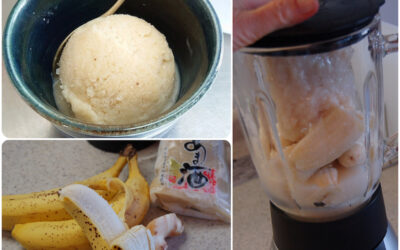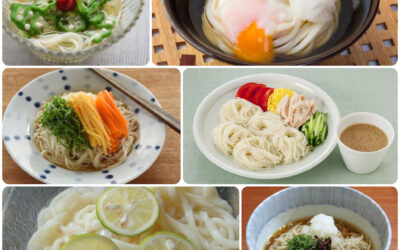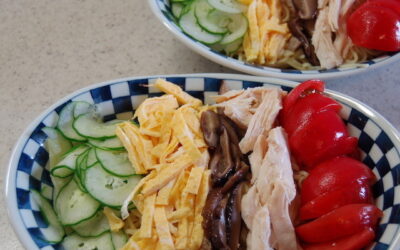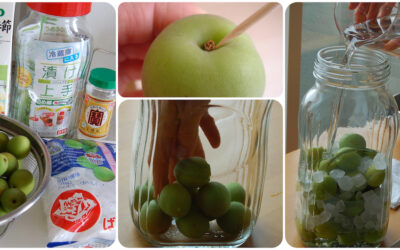
Kitchen Culture Cooking Club
EXPLORE and PRACTICE Japanese cooking in your own kitchenAbout Kitchen Culture Cooking Club
Welcome to the Kitchen Culture Cooking Club, a community space providing encouragement to those who want to EXPLORE and PRACTICE Japan’s washoku wisdom in their own kitchens.
To facilitate this, themed projects will be posted to this page periodically. Project Assignments and links to relevant reference material stored on this site will be posted to this page. Anyone, anywhere in the world, with a sincere interest in Japanese food culture is welcome to browse the contents of this page and then replicate the themed project in their own kitchen.
For those who wish to display-and-discuss their projects with like-minded people, I invite you to join the KITCHEN CULTURE Cooking Club Facebook Group (formerly the TSUDOI Project), an interactive community space.
PROJECT Obon

OBON cookery: Cucumbers & Eggplant
Project OBON is about eggplant and cucumber cookery. Why eggplants and cucumbers? These vegetables reach their peak of flavor during the summer when Obon is celebrated. And, the vegetables are fashioned into transportation for departed spirits.
Eager to begin their annual visit, departed souls travel swiftly back to this world on cucumbers (galloping horses). But when it comes time to return to the spirit world, they are reluctant to go… favoring transport on slower oxen (eggplants).
Various eggplant and cucumber dishes appear on summer menus throughout Japan. Try your hand at making one (or better yet, all) of these eggplant and/or cucumber dishes.
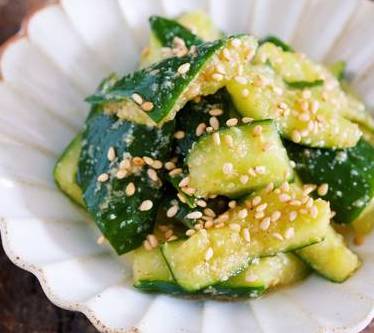
Smashed Cucumbers with Toasted Sesame
Most supermarkets in Japan set up a small table at the back of their produce section with slightly bruised or blemished (and therefore deeply-discounted) fruits and vegetables. Here, too, you can find day-old, but still fine-flavored and perfectly safe to consume, items. Whenever I see less-than-gorgeous-looking, odd-shaped cucumbers I grab them to make this salad. Find out more, and download a recipe for Smashed Cukes.
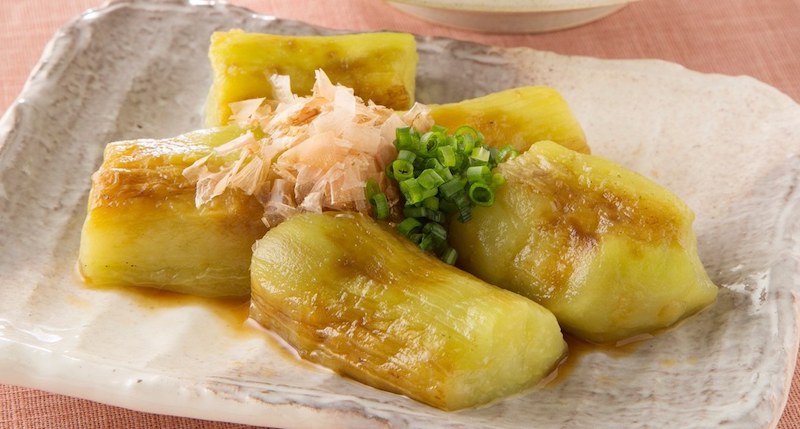
Roasted Eggplant
Late in summer eggplant skins begin to toughen a bit. That is when yaki nasu (roasted eggplant with the skin peeled away) is especially good. Served chilled and showered with smoky katsuo-bushi flakes and chives, it makes a refreshing side dish on a muggy day.
Find out more, and download a recipe for Roasted Eggplant.
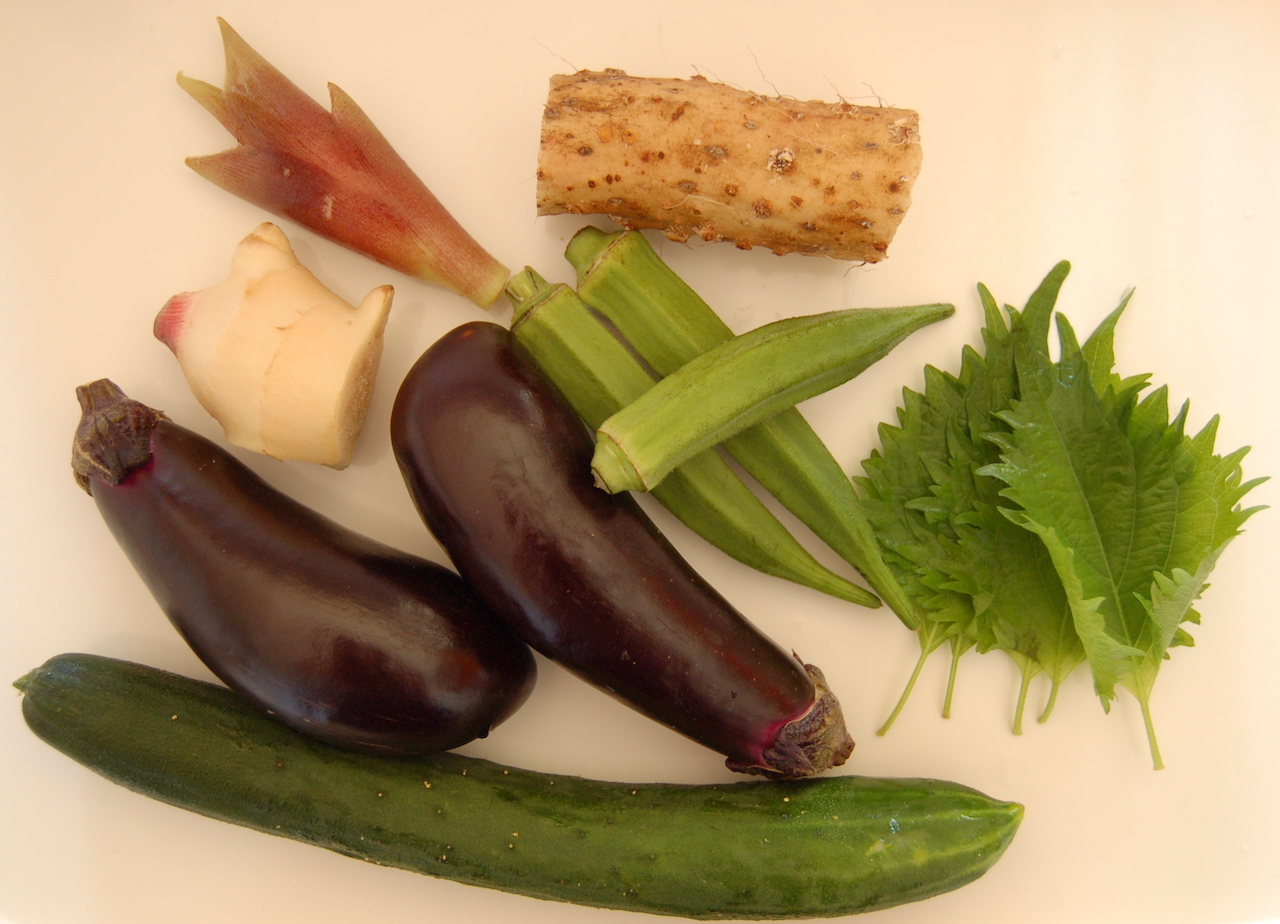
山形だし Yamagata Dashi
Somewhere between a salsa and chutney, Yamagata’s summertime signature dish Dashi is a refreshing mixture of chopped cucumber, eggplant and other summer vegetables. It is truly restorative on days when temperatures and humidity soar.
The Japanese generally embrace foods with viscosity (think positive cling, not negative slime) and in this dish, vegetables such as okra and a slippery yam called nagaimo encourage other minced morsels to bind with each other. The result is a mixture of crisp, succulent tidbits with a slightly slick mouth feel.
For more information and a recipe visit the Yamagata Dashi post.
Visit OBON SUMMER HOLIDAYS blog post for more information and inspiration.
Download a copy of my August 2023 newsletter themed on Obon.
Recipes and Resources
Stock (Dashi)
Dashi stock is essential to making soups and simmered or stewed dishes. Dashi is also used when making many egg dishes and all sorts of sauces, dips and dressings. Using good dashi will make a noticeable difference in the outcome of so many dishes you prepare.
Click to download recipes for (vegan) Kelp Alone Stock or Standard Sea Stock + Smoky Sea Stock
How to Cook Rice
In Japanese, the word for cooked rice, ご飯 GOHAN, is the same as the word for a meal, ご飯 GOHAN. Indeed rice is central to the meal. Download the Rice with Mixed Grains recipe.
How to Prepare Sushi Rice
Sushi dishes are made with rice that has been seasoned (with sweetened vinegar) AFTER being cooked. Download the Classic Sushi Rice recipe.
Quick Pickles
The Japanese enjoy a wide variety of tsukémono pickles, many can be assembled quickly and are ready to eat within a short time.
Download a recipe for Quick-Fix Hakusai Cabbage.
Frozen Ices
Ama-zaké has been part of the Japanese pantry for thousands of years. During the Muromachi period (1392-1573) ama-zaké consumption took on a regional identity: In and around Kyoto, it was sipped in the summertime as a stamina drink to fortify a heat-weary metabolism,...
PROJECT Cold Noodle Salad
FIRST... choose your NOODLE: thread-thin sōmen ... or thick, slithery-chewy udon ... rustic wholegrain soba ... or curly-springy chūka soba. NEXT... decide if you want to serve your noodles DIPPING-STYLE (tsuké-jiru) or POUR-OVER STYLE (kaké-jiru) and choose your DIP...
Cold Noodles Part Three: Hiyashi Chuka
For centuries, the Japanese have adapted and adopted foods and food ways from many culinary traditions. Asia in general, and China in particular, has probably been the greatest source of “inspiration” over the years. In fact the highly popular Japanese summer noodle...
UMÉSHU Plum Wine
In Japan, early June is the time for UMÉ SHIGOTO (plum work), transforming the harvest of not-yet-fully-ripe fruit into a sweet liqueur (uméshu) and/or sour, lip-puckering salt-cured uméboshi. If you are able to source green, not-fully-ripe Japanese umé plums it is...

